Dingyi Yang
TimeZero: Temporal Video Grounding with Reasoning-Guided LVLM
Mar 17, 2025Abstract:We introduce TimeZero, a reasoning-guided LVLM designed for the temporal video grounding (TVG) task. This task requires precisely localizing relevant video segments within long videos based on a given language query. TimeZero tackles this challenge by extending the inference process, enabling the model to reason about video-language relationships solely through reinforcement learning. To evaluate the effectiveness of TimeZero, we conduct experiments on two benchmarks, where TimeZero achieves state-of-the-art performance on Charades-STA. Code is available at https://github.com/www-Ye/TimeZero.
What Makes a Good Story and How Can We Measure It? A Comprehensive Survey of Story Evaluation
Aug 26, 2024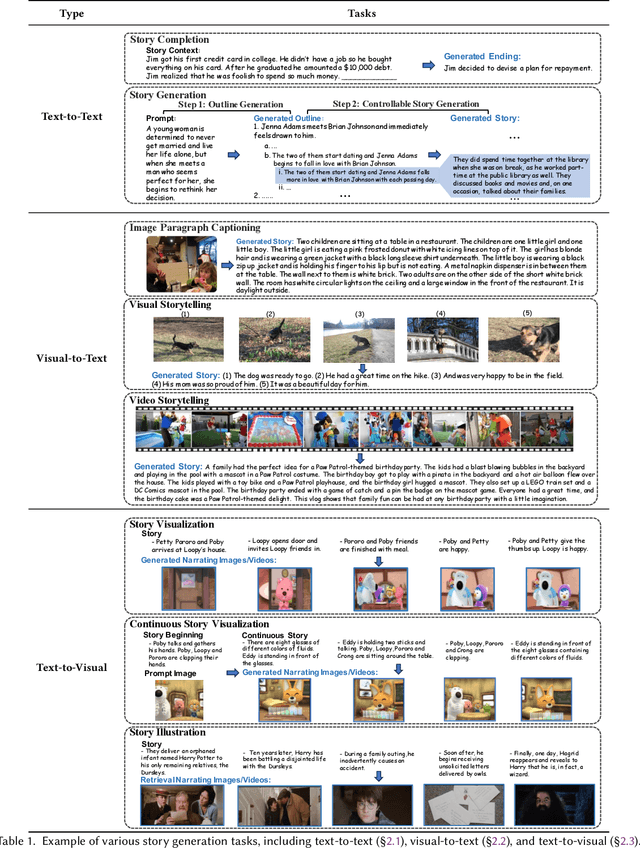
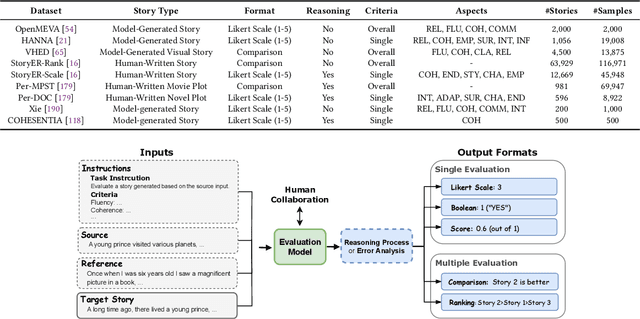
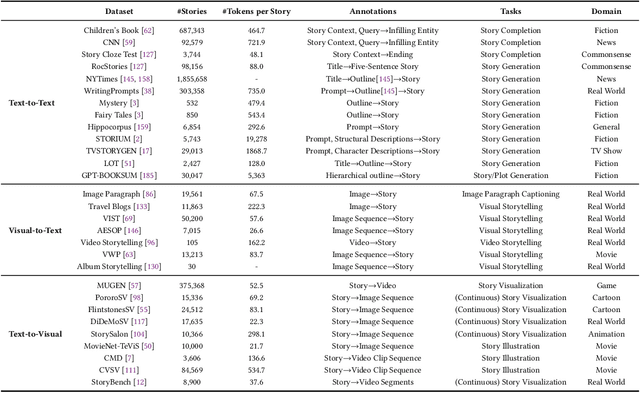
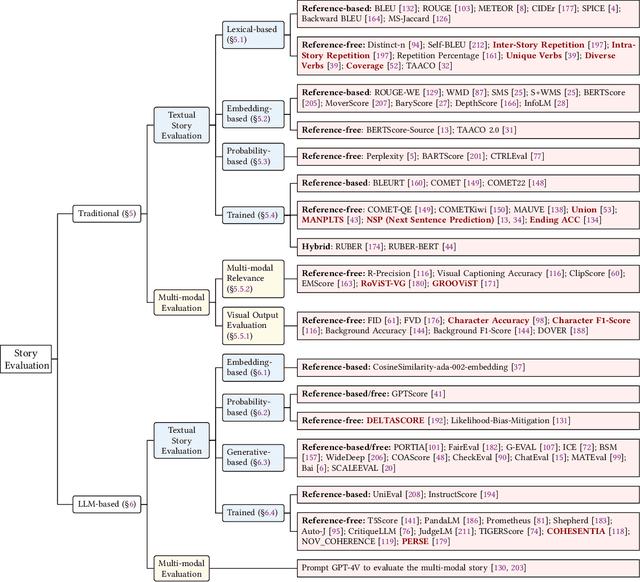
Abstract:With the development of artificial intelligence, particularly the success of Large Language Models (LLMs), the quantity and quality of automatically generated stories have significantly increased. This has led to the need for automatic story evaluation to assess the generative capabilities of computing systems and analyze the quality of both automatic-generated and human-written stories. Evaluating a story can be more challenging than other generation evaluation tasks. While tasks like machine translation primarily focus on assessing the aspects of fluency and accuracy, story evaluation demands complex additional measures such as overall coherence, character development, interestingness, etc. This requires a thorough review of relevant research. In this survey, we first summarize existing storytelling tasks, including text-to-text, visual-to-text, and text-to-visual. We highlight their evaluation challenges, identify various human criteria to measure stories, and present existing benchmark datasets. Then, we propose a taxonomy to organize evaluation metrics that have been developed or can be adopted for story evaluation. We also provide descriptions of these metrics, along with the discussion of their merits and limitations. Later, we discuss the human-AI collaboration for story evaluation and generation. Finally, we suggest potential future research directions, extending from story evaluation to general evaluations.
Visual Captioning at Will: Describing Images and Videos Guided by a Few Stylized Sentences
Jul 31, 2023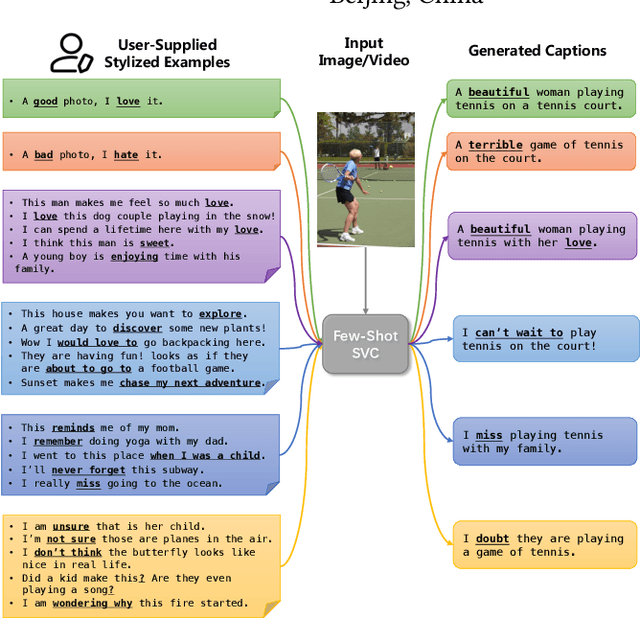

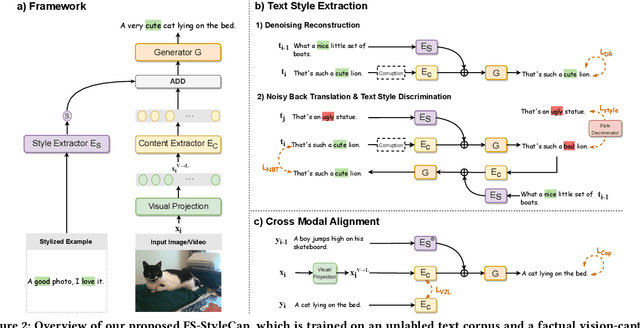
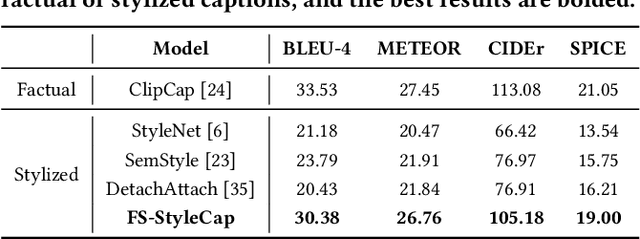
Abstract:Stylized visual captioning aims to generate image or video descriptions with specific styles, making them more attractive and emotionally appropriate. One major challenge with this task is the lack of paired stylized captions for visual content, so most existing works focus on unsupervised methods that do not rely on parallel datasets. However, these approaches still require training with sufficient examples that have style labels, and the generated captions are limited to predefined styles. To address these limitations, we explore the problem of Few-Shot Stylized Visual Captioning, which aims to generate captions in any desired style, using only a few examples as guidance during inference, without requiring further training. We propose a framework called FS-StyleCap for this task, which utilizes a conditional encoder-decoder language model and a visual projection module. Our two-step training scheme proceeds as follows: first, we train a style extractor to generate style representations on an unlabeled text-only corpus. Then, we freeze the extractor and enable our decoder to generate stylized descriptions based on the extracted style vector and projected visual content vectors. During inference, our model can generate desired stylized captions by deriving the style representation from user-supplied examples. Our automatic evaluation results for few-shot sentimental visual captioning outperform state-of-the-art approaches and are comparable to models that are fully trained on labeled style corpora. Human evaluations further confirm our model s ability to handle multiple styles.
 Add to Chrome
Add to Chrome Add to Firefox
Add to Firefox Add to Edge
Add to Edge